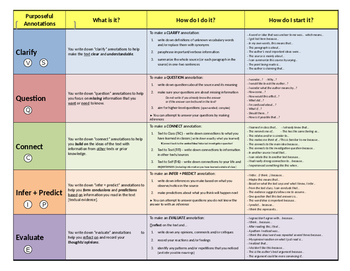Annotation Chart with Sentence Starters / Stems - Annotating Documents
- Word Document File
What educators are saying
Also included in
- Useful chart and bookmark bundle that can be printed out, laminated, or shared with students electronically and then used to support students' close reading of any text.The chart helps students categorize and write 5 different types of annotations (reading strategies) for any class. They are clarifyPrice $4.00Original Price $6.00Save $2.00
Description
Useful chart that helps students categorize and write 5 different types of annotations (reading strategies) for any class. They are clarify, question, connect, infer & predict, and evaluate annotations.
► The chart explains to students what the annotation is (a definition), how to do it, and how to start it (sentence starters). The sentence starters have really helped my students understand the different types of annotations they can make as wells as how to practice them.
► This chart can be printed out, laminated, and given to students to use as a support during any class or homework (and it is perfect to share with students during distance learning!). In the preview, I show the first type of annotation on the chart (clarify). Below clarify are the four other types of annotations. There is also a bookmark I created to go with the chart that students can use when annotation complex texts.



